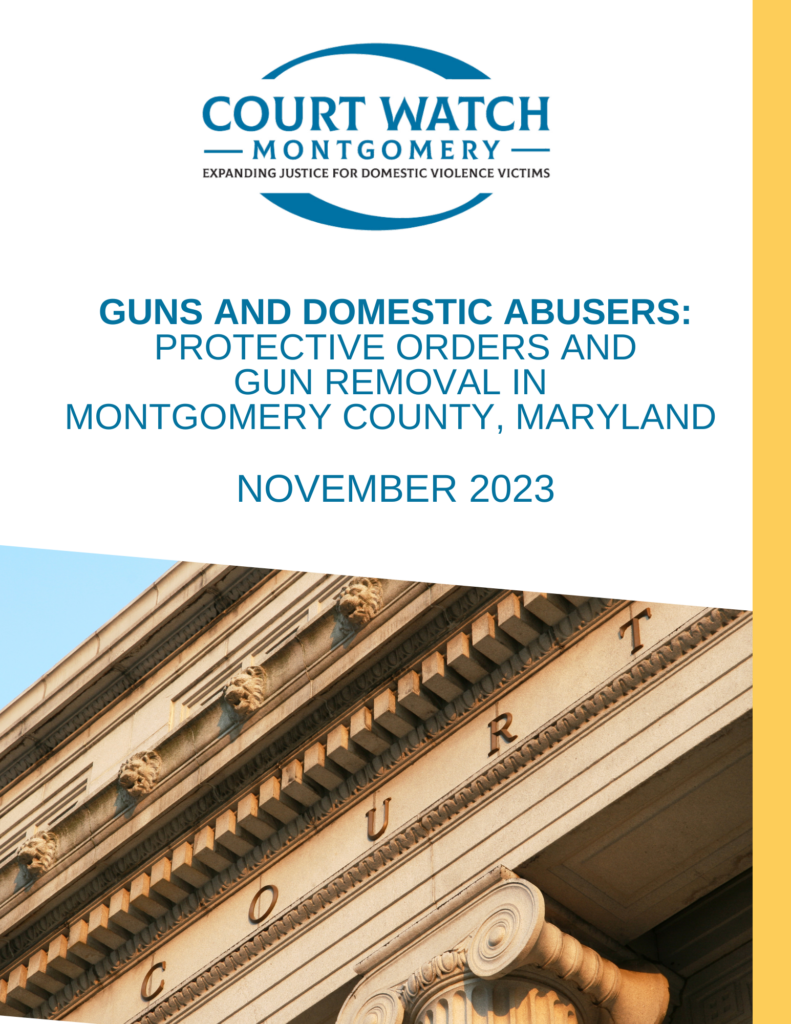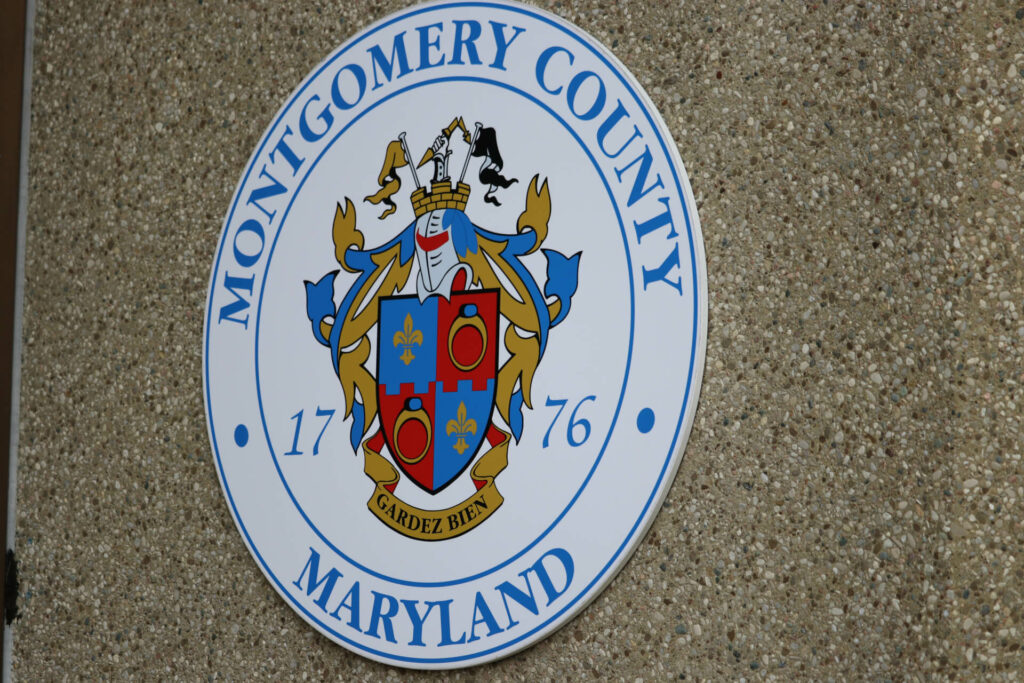Guns and Domestic Abusers: Protective Orders and Gun Removal in Montgomery County, Maryland

Recognizing the extreme danger of guns in domestic violence situations, and the risk to victim safety posed by the Rahimi case, we believe it is timely to report on relevant laws in Maryland and practices in Montgomery County to keep firearms away from domestic abusers through use of civil protective orders. Part I of this report presents an overview of federal and Maryland law governing domestic violence protective orders and firearms, followed by a description of the protective order process in Maryland and procedures used by the Montgomery County Sheriff’s Office to serve orders and remove guns. Data on the number of guns removed from abusers in Montgomery County also are presented. Part II of the report presents findings on the use of gun-related best practices by District Court judges at protective order hearings, based on data collected by Court Watch volunteers and our review of the protective order service process in Montgomery County. Conclusions and recommendations to address these findings are included at the end of the report.
Snapshot of Domestic Violence Protective Orders in Montgomery County during COVID-19

This informational report provides a brief summary of the number of Protective Orders granted in 2019
and 2020 in Montgomery County, at the height of COVID-19. It demonstrates that during court closures,
while their numbers were much reduced, there were temporary, and some final protective orders
granted using both commissioners’ offices and virtual options. Additionally, during court disruptions,
data indicate that relief ordered was more restrictive than during normal court operations, presumably
due to judges giving priority to more dangerous cases.
What does strangulation in Montgomery County look like? An analysis of strangulation in protective order hearings in Montgomery County, Maryland

In 2020 the Maryland General Assembly updgraded strangulation and intentional suffocation from a
second degree assault to first degree felony assault, indicating the seriousness of this crime. This report
discusses this complicated issue in inter partner violence cases, noting the difficulty of establishing
evidence of its occurrence. We examine the outcomes of 226 civil protective order cases in
Montgomery County between 2011 and 2019 where strangulation was alleged by the petitioner and
examine several variables, as well as reviewing the criminal and civil records of the abuser/respondents
to determine if they had prior records of inter partner violence.
Over 32,000 domestic violence 911 calls, but there’s still a lot we don’t know: An analysis of Montgomery County, Maryland 911 database

This report examines Montgomery County’s Data base of emergency police calls from 2017-2019 in an
effort to determine whether the 911 calls are appropriately flagged as inter partner violence related,
which would enable government and non-profit domestic violence agencies to identify areas in the
County where IPV is prevalent, establish the degree of violence, provide a baseline for studying trends.
The report finds the current 911 call coding system does not track the total number of emergency calls
related to IP, using non-specific codes that do not adequately describe the type of violence reported, as
well as discrepancies between what is reported by officers on the scene and the resultant coding.
Judge refuses protection to child at great risk
A District Court judge handling protective orders in November listened as a petitioner told her story. The petitioner described how her partner attacked and strangled her while she was holding their young child in her arms. He strangled her again on the bed, with the child lying right next to them. The respondent’s actions put the child in great danger and show a […]